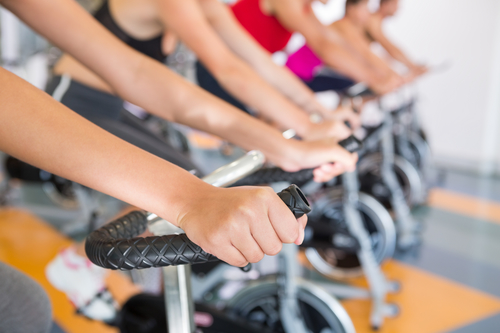If you’ve ever been part of a race of any kind – running, cycling, swimming, even weightlifting – then you’ve seen it happen. There are people who use static stretching (holding a certain position at the edge of your range of motion for a specific period of time) as a means of “loosening up” before their activity. You probably haven’t ever really paid much attention to it. But, next time you’re at a race, or the gym for that matter, take a look around and you’ll see what I mean.
Why am I bringing this up? Good question. The answer is simple: The worst possible time to stretch in a static manner is BEFORE you exercise. The general rule of thumb that I follow with my clients and in my own workouts is a dynamic warmup, (very basic movements that mimic what will be performed during the actual workout) followed by some static stretches after. There are a few specific reasons why I follow this strategy and I want to share them with you…
- YOUR MUSCLES AREN’T LOOSE YET. Your muscles are cold. They’ve been sitting behind a desk or in a car all day, and they’re just not ready for exercise. Stretching them before they loosen up would be like pulling on a banjo or guitar string. You’re just not going to get very far. Not to mention, pulling on a cold muscle is a surefire way to (quite literally) pull or even tear a muscle. NO STATIC STRETCHING BEFORE EXERCISE!!!
- DYNAMIC WARMUP PREPARES YOUR BODY FOR EXERCISE. I like to use the term “bridging the gap” when talking about dynamic warmup. Most people can’t just take off on a dead sprint, or tie their shoes and go for a 10 mile run. They need to loosen up first. The best way to do this is to go through a series of movements that are going to imitate your actual workout. This will do a couple of things. First and foremost, it will get your heart rate elevated. You will actually be able to feel your breathing increase and your heart begin to pump a little bit. This will in turn elevate your body temperature and increase blood flow to the muscles that are being used.
- For a running workout, you would obviously want to mimic the motion of running, but also mix in some low intensity exercises that will elevate your heart rate without too much effort. For example:
- Stationary High Knees
- Stationary Butt Kicks
- Bodyweight Squats
- Jumping Jacks
- Alternating Toe Touches
- Do each exercise for 20-30 seconds, repeat two times through
- For a running workout, you would obviously want to mimic the motion of running, but also mix in some low intensity exercises that will elevate your heart rate without too much effort. For example:
- Rate of Perceived Exertion (RPE). Rate of perceived exertion is a fancy term that describes how hard you think you’re working. This is used commonly in fitness testing as a measurement of how hard to push individuals. A recent Australian study (you can read in its entirety here) showed that while static stretching before a race doesn’t necessarily affect your finishing time, it can directly impair your neuromuscular functioning and increase RPE. What this means is that even though you may still be able to finish around the same time, it’s going to take you longer to get going, and it will seem a lot more difficult doing so. Running can sometimes be tough enough on its own. Why do something that is just going to perpetuate that?
Let’s be honest, nobody likes “getting warmed up” before a run or workout. Personally, it’s my least favorite part. Your body is cold and stiff, and loosening it up can be a hassle. So why not, at least, make your warmup more effective? You may not ever enjoy it, but you can at least get the most out of it. So forget the traditional stretches and get moving. It’s far and away the better method for preparing your body for exercise. When you’re all done is when you can relax and hold those “oh-so-comfortable” static stretches.
Post contributed by Brock Jones. Brock is Co-Owner and Head Trainer with BodyFIT, Inc. in Lexington, KY. He holds a Masters of Science in Exercise Physiology from the University of Kentucky and is an NSCA Certified Strength and Conditioning Specialist. You can read more of Brock’s posts about fitness and exercise on the BodyFIT Punch Blog.



